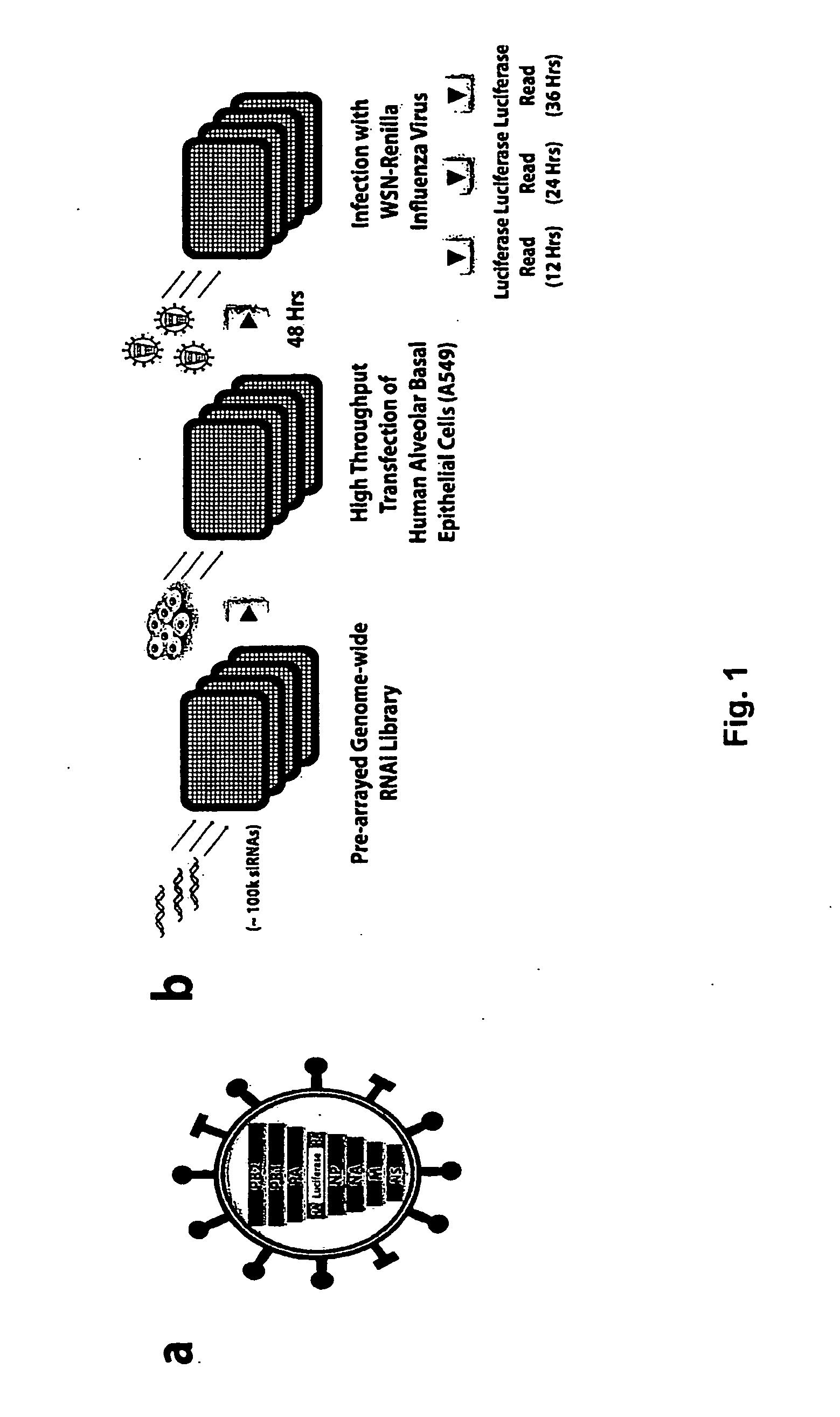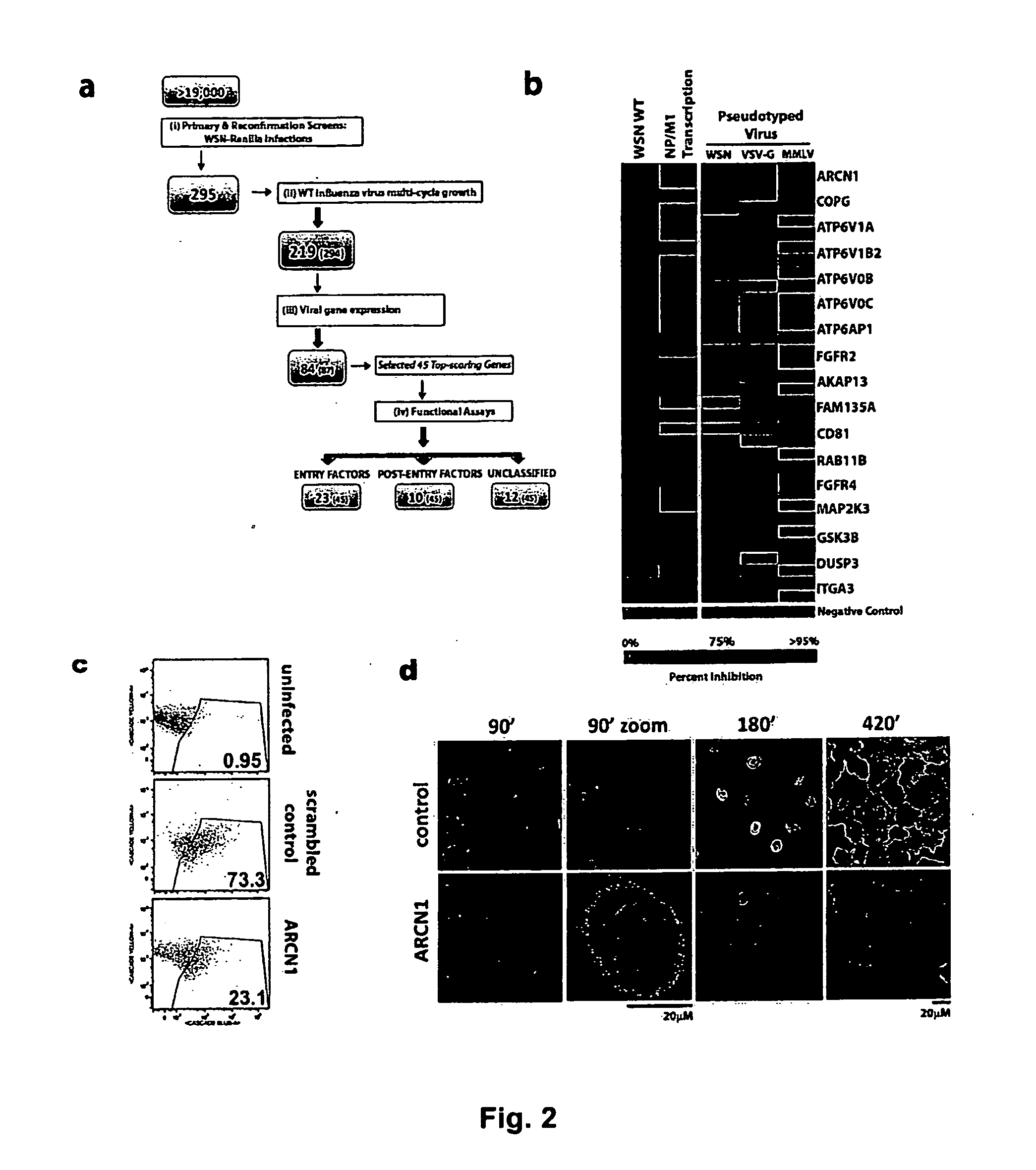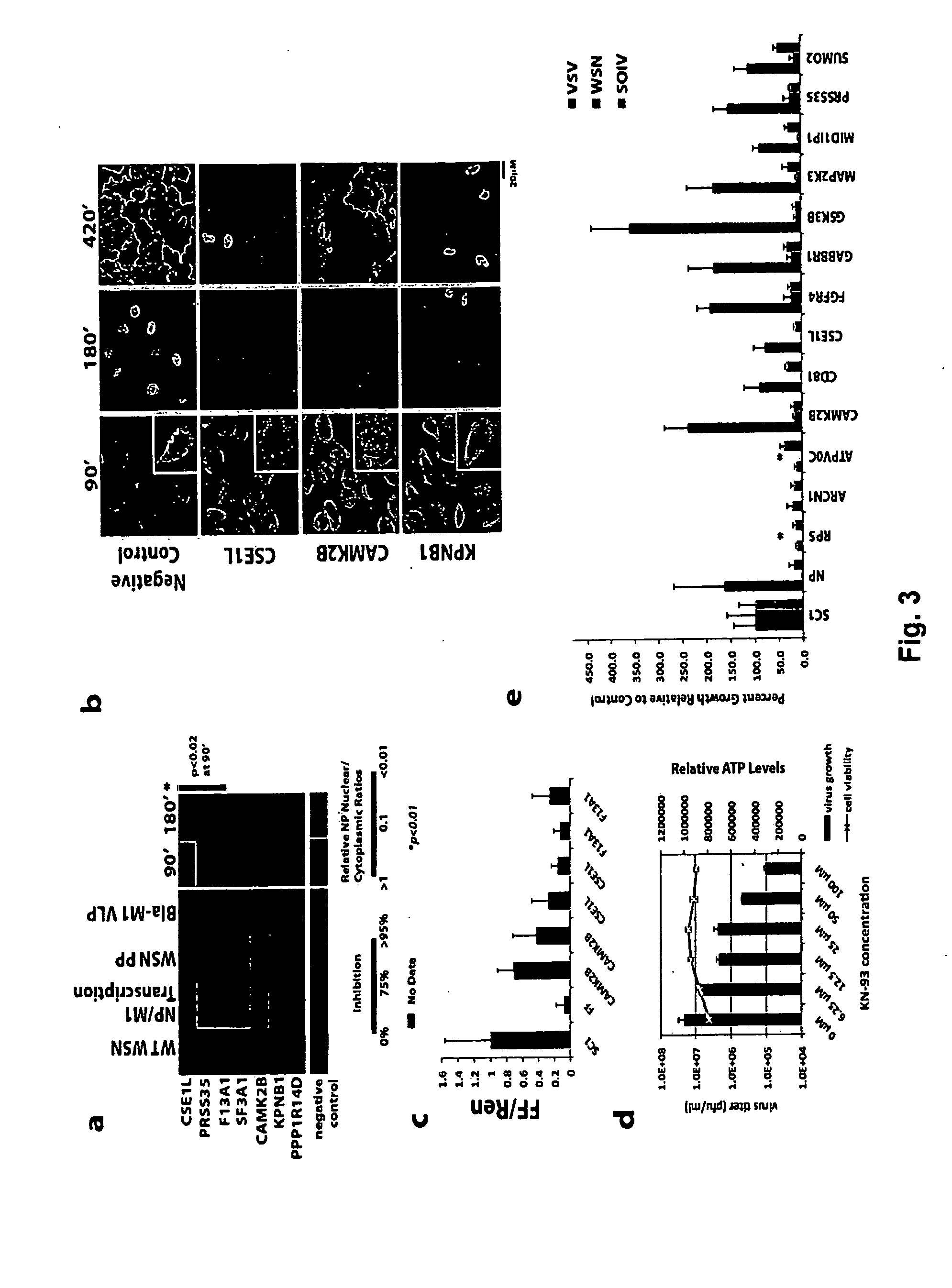Compositions and Methods for Inhibiting Human Host Factors Required for Influenza Virus Replication
a technology of human host factors and influenza virus, which is applied in the direction of biocide, heterocyclic compound active ingredients, amide active ingredients, etc., can solve the problems of limited number, high mortality rate, and traditionally considered less desirable candidates for cellular targets, so as to reduce the titer of the virus, reduce the duration, and reduce the severity
- Summary
- Abstract
- Description
- Claims
- Application Information
AI Technical Summary
Benefits of technology
Problems solved by technology
Method used
Image
Examples
Embodiment Construction
[0109]The present application is based, in part, on the discovery that influenza virus replication can be modulated by pharmacologically targeting human host cell factors required for viral replication. Targeting host cell factors, rather than the viral factors required for influenza virus replication, may greatly reduce the emergence of viral resistance and expands the number of targets for antiviral intervention. Without being limited by theory, the embodiments provided herein are based in part on the discovery that compounds (including, e.g., nucleic acid compounds, such as siRNAs, and small molecules) that reduce or inhibit the expression or activity of specific classes of human host cell proteins reduce influenza virus replication and thus are useful as antiviral agents.
[0110]Provided herein are compounds, including but not limited to nucleic acid compounds (e.g., siRNAs) and small molecules, that target human host cell factors involved in influenza virus replication, compositi...
PUM
| Property | Measurement | Unit |
|---|---|---|
| width | aaaaa | aaaaa |
Abstract
Description
Claims
Application Information
 Login to View More
Login to View More - R&D
- Intellectual Property
- Life Sciences
- Materials
- Tech Scout
- Unparalleled Data Quality
- Higher Quality Content
- 60% Fewer Hallucinations
Browse by: Latest US Patents, China's latest patents, Technical Efficacy Thesaurus, Application Domain, Technology Topic, Popular Technical Reports.
© 2025 PatSnap. All rights reserved.Legal|Privacy policy|Modern Slavery Act Transparency Statement|Sitemap|About US| Contact US: help@patsnap.com



